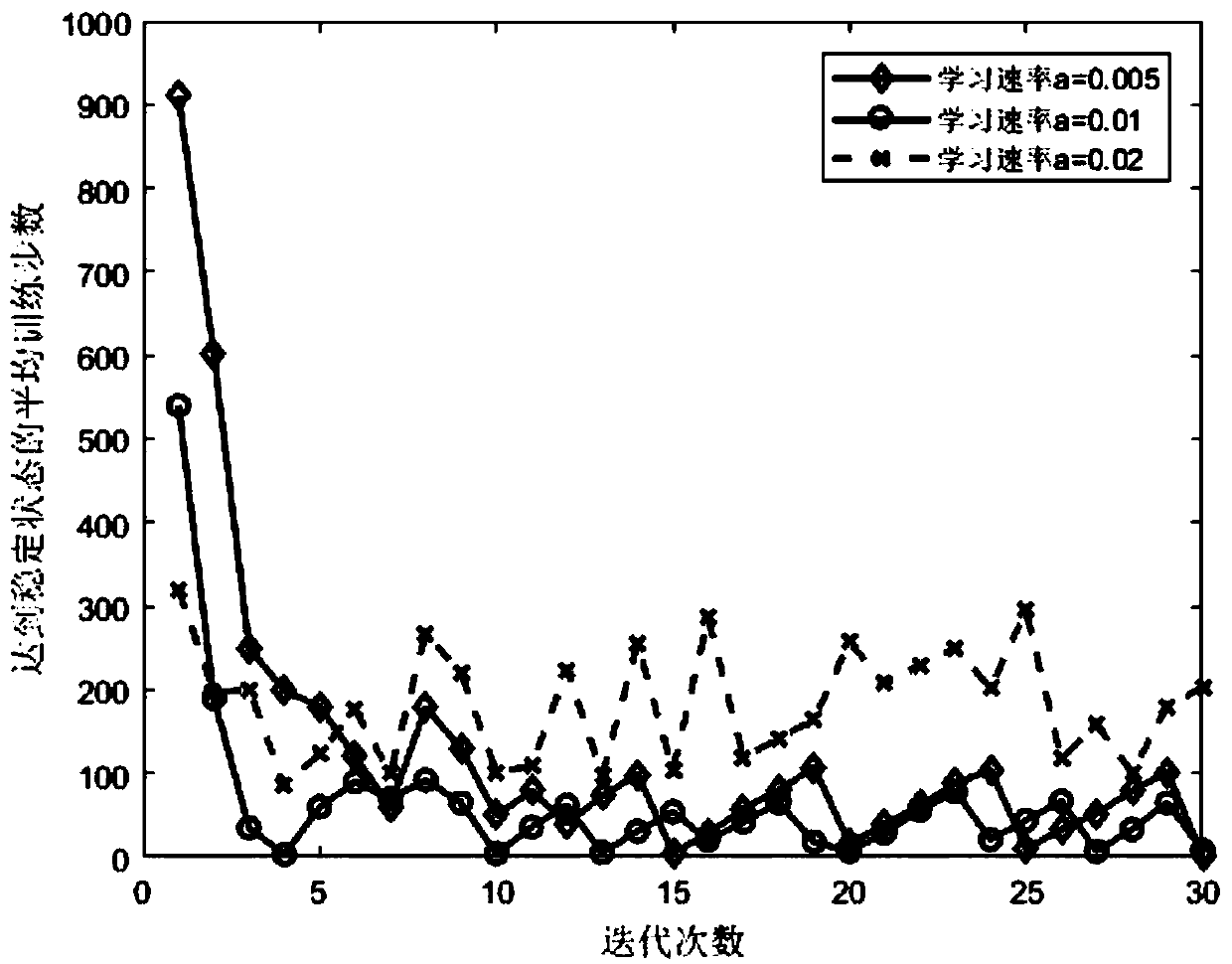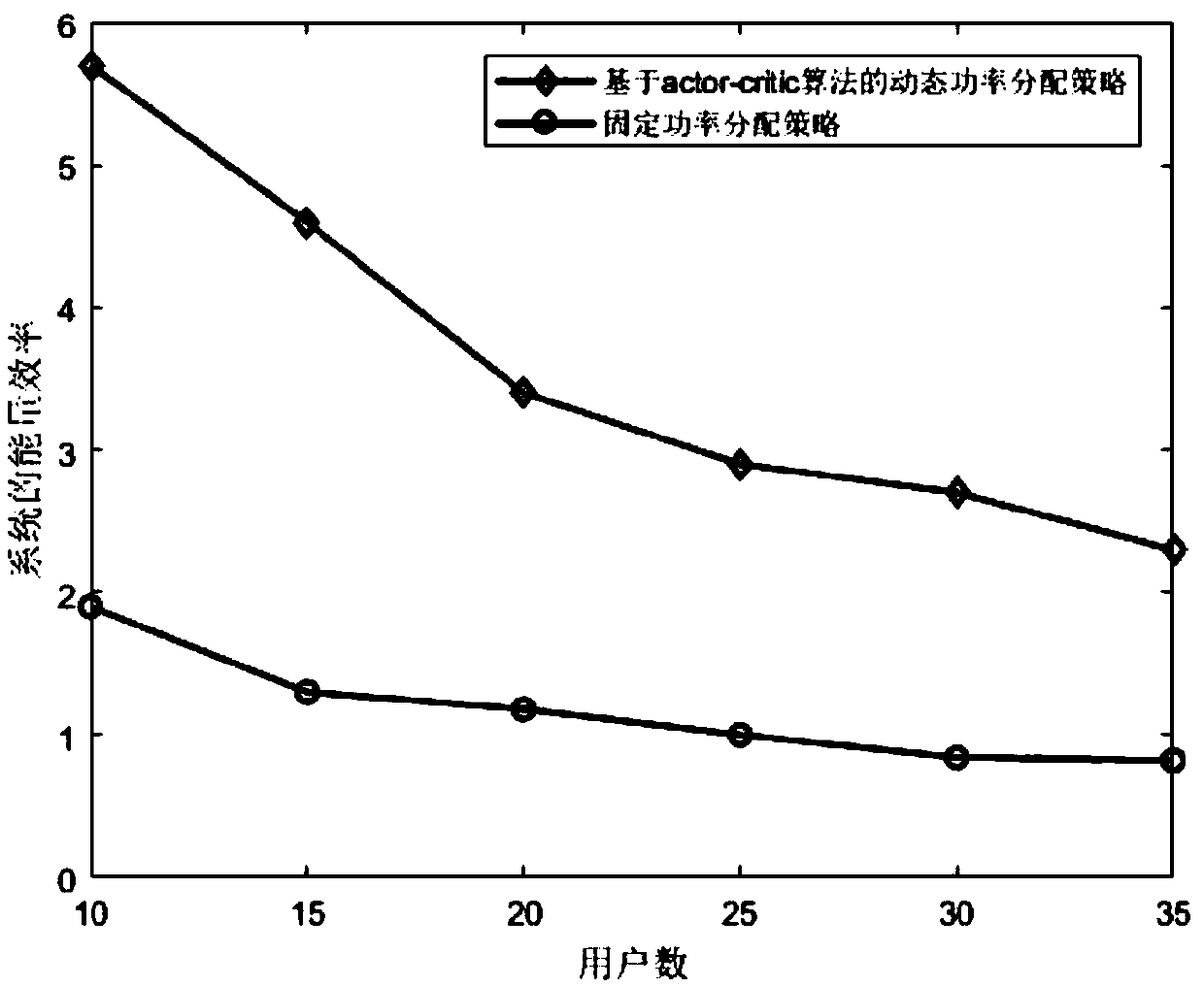Power allocation method in power domain NOMA based on reinforcement learning algorithm
A technology of reinforcement learning and distribution method, applied in the field of wireless communication, can solve the problems that the optimized system performance cannot achieve good results and the complexity is high
- Summary
- Abstract
- Description
- Claims
- Application Information
AI Technical Summary
Problems solved by technology
Method used
Image
Examples
Embodiment Construction
[0060] The technical solutions of the present invention will be described in further detail below with reference to the accompanying drawings and embodiments.
[0061] The present invention provides a power allocation method in NOMA based on the reinforcement learning algorithm power domain, such as figure 1 As shown, the model is established based on the downlink of a single-cell wireless cellular network. It is assumed that there is a single base station and K users, and all terminals are equipped with a single antenna. The base station transmits data to all users under the constraint of total power. Classify channels as 01 | 2 2 | 2 K | 2 , where h i (1<i<K) is the channel gain of the i-th user, and the instantaneous channel of the i-th user is always the weakest. In the non-orthogonal multiple access system for information transmission, the base station uses superposition coding to send messages, and the receiving end uses serial interference cancellation for decoding...
PUM
 Login to View More
Login to View More Abstract
Description
Claims
Application Information
 Login to View More
Login to View More - R&D
- Intellectual Property
- Life Sciences
- Materials
- Tech Scout
- Unparalleled Data Quality
- Higher Quality Content
- 60% Fewer Hallucinations
Browse by: Latest US Patents, China's latest patents, Technical Efficacy Thesaurus, Application Domain, Technology Topic, Popular Technical Reports.
© 2025 PatSnap. All rights reserved.Legal|Privacy policy|Modern Slavery Act Transparency Statement|Sitemap|About US| Contact US: help@patsnap.com



